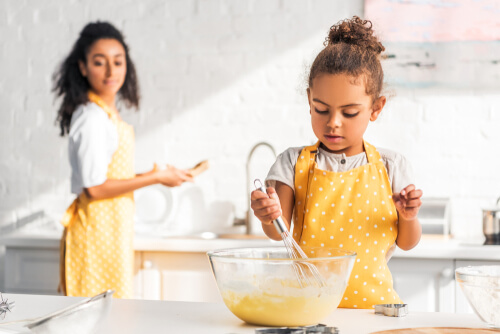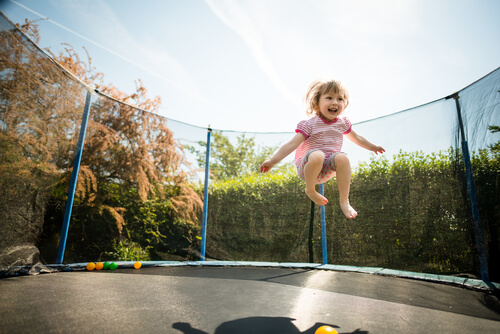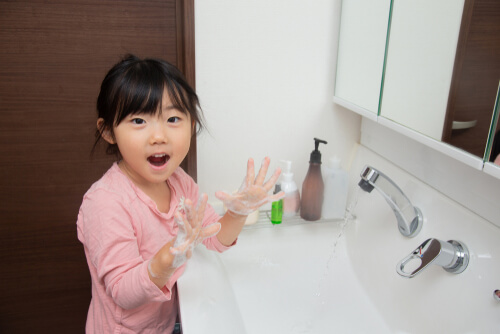How to Teach Kids about Health Literacy
Jan 14, 2022 We all know that literacy and numeracy are major aspects of childrens’ coursework. Across all geographic locations, grade school curriculum focuses on basic subjects such as reading, writing, and arithmetic.
In This Article
- What Does Health Literacy Include?
- Basic Ways Parents Can Enhance Their Knowledge of Health-related Information
- Interactive Learning – Health Literacy Activities for Children
- 1. Encourage them to get involved in the kitchen
- 2. Have children color pictures and complete worksheets related to the human body
- 3. Educate your kids about personal safety as it occurs in their lives
- 4. Use pretend play (like doctor and nurse) to teach them real facts about going to the doctor or hospital.
- 5. Plan spa days at home to teach kids about self-care, emotional wellness, and stress management.
- 6. Teach them about hand hygiene, germs, and how they can spread.
- 7. Use minor pain (cuts, scrapes, sprains) to teach kids about pain.
- 8. Allow or encourage your child to speak with family members or friends who have new or lasting conditions
- 9. Use the teach-back method
- Conclusion
But what you may not know is that literacy and numeracy play a large role in a child receiving education about their health. These two skills are the foundations of what we call health literacy.
The Centers for Disease Control and Prevention (CDC) defines health literacy as the ability to seek, read, calculate, understand, and use a variety of information to make well-informed decisions regarding their health.
So, what does that even mean? There are many examples of health literacy that may even be a consistent part of your life.
Boost Your Child’s Speech Development!
Improve language & communication skills with fun learning!

What Does Health Literacy Include?
- Remembering when to take medication each day
- Keeping track of appointments
- Practicing a daily or weekly workout routine to prevent illness
- Reading nutrition labels
- Finding and understanding information about your condition, illness, or procedure; either via the internet or by asking a medical professional
- Recording symptoms (pain, swelling, loss of motion, etc.) or habits (appetite, sleep patterns, water intake, energy levels, etc.) to consult with a medical professional and prevent a condition from developing or worsening
- Teaching kids about their wellness along with proper health practices
The last example in particular can seem daunting to parents, especially those who may not have a good understanding of health literacy themselves. In order to appropriately educate kids about their health, parents should be equipped with the right tools.

Basic Ways Parents Can Enhance Their Knowledge of Health-related Information
Ask medical professionals for information related to your child’s health.
For example, if your child has worsening allergies, ask for brochures or print-outs that educate you about prevention, causes, and medications.
Finding credible sources with pertinent information
Below is a list of reliable online resources. You will notice that many of them end in “.gov” and “.org,” which is a good indicator of an established health organization.
- The Centers for Disease Control and Prevention
- The World Health Organization
- American Cancer Society
- American Lung Association
- United Spinal Association
- National Association of Rare Diseases
- Spina Bifida Association
- Asthma and Allergy Foundation of America
- Healthy Children: The American Academy of Pediatrics
- United Cerebral Palsy
- Autism Speaks
- Brain Injury Association of America
- National Institute of Health
- Medline Plus (U.S. National Library of Medicine)
- National Institute of Mental Health
Any health-related information (recently acquired or prior knowledge that you verified for accuracy) that you plan to give your child should follow the three Cs.
- CLEAR
- COMPREHENSIBLE
- CONCISE
These three Cs will ensure that you are speaking to your child using short sentences or phrases that are free of medical jargon and other big words. You can also use familiar, simple pictures and other visual cues to help your child understand basic concepts.
As mentioned earlier, parents should engage in this preparation not only for their own sake, but also so they can more effectively educate their kids about health. The next step is to involve your child in the process.
Interactive Learning – Health Literacy Activities for Children
1. Encourage them to get involved in the kitchen
This will not only teach them how to cook healthy meals, but it gives them the opportunity to learn how the ingredients provide our bodies and minds with the nutrients they need.

Children of all ages can help in some capacity. Younger kids can make a shopping list, gather ingredients, stir/prepare dry ingredients (taking peas out of the pod or something similar), or unpack groceries. Older kids can chop vegetables, boil water, or monitor items cooking in the oven. Tasks can be adjusted based on your child’s abilities and preferences.
2. Have children color pictures and complete worksheets related to the human body
There are plenty of printable resources that can be found online related to joints, muscles, organs, and body systems.
For example, color the lungs and the bronchi that give them air. Then talk to your child about where the lungs are and what they do for the body. It is also a good activity to have your child make a basic outline of the body and label or draw important organs, such as the heart, lungs, brain, and intestines.
3. Educate your kids about personal safety as it occurs in their lives
This is highly applicable to the health of their bodies as well as appropriate interaction with their environment.

Summertime is a good opportunity to consistently teach kids about water safety and how to safely use a trampoline. Fall may be when you want to educate them on wearing a helmet and other protective gear when riding their bicycles. Winter holidays can bring up the topic of fire safety related to candles and fireplaces.
4. Use pretend play (like doctor and nurse) to teach them real facts about going to the doctor or hospital.
If your child is interested in dressing up to play doctor, you can show them how to take vital signs and give “shots” so they know what will happen when they visit the doctor. Similar role play can also prepare children, (especially those with chronic conditions) about what they can expect during a hospital visit.
5. Plan spa days at home to teach kids about self-care, emotional wellness, and stress management.
You can use this as a fun day with yoga, calming music, face scrubs, and fluffy robes, but this can also be a great forum to talk about regulating stress and other emotions. You can encourage children to talk about their feelings and teach them about the “How does your engine run?” protocol that uses descriptors such as running low (tired, lethargic), running high (anxious, angry, frustrated), and running just right. This also helps kids learn what activities can help them get to “just right” if they are running high or low.
6. Teach them about hand hygiene, germs, and how they can spread.
Have your kids put glitter or soil on their hands. Let them first try to take it off using hand sanitizer. Then have them wash their hands with soap and water for at least 20 seconds, being sure to scrub and lather the whole time. After using hand sanitizer, your child will see that not all of the glitter/soil will come off. You can tell them the same applies to germs, so hand sanitizer isn’t entirely effective and should only be used if you can’t wash your hands.

7. Use minor pain (cuts, scrapes, sprains) to teach kids about pain.
Encourage your child to describe their pain and learn healthy ways to cope with it. You can also teach them about basic first aid — cleaning the wound with peroxide, using antibiotic cream/ointment, and placing a sterile bandage — while mentioning the benefits of heating pads and ice packs. Ice is best for swelling and heat is best for muscle injuries that cause aching pain. Neither should be used for longer than 15 minutes.
8. Allow or encourage your child to speak with family members or friends who have new or lasting conditions
It is best to speak with the adult prior to ensure they are comfortable talking about their illness.
This may happen organically at family functions, or you can use such scenarios as conversation starters afterward: “Did you see grandma using her new set of wheels to get around today? That’s because she just had a hip replacement. Let’s talk about what that means.” This is a great chance to teach about respect, appropriate social interaction, and inclusion.

9. Use the teach-back method
This tool is commonly used by therapists to assess the effectiveness of the education they provided their patients with. However, this can be used with children over the age of 5 who are able to verbally communicate.
After teaching your child about something new, ask them to explain it back to you in their own words. Encourage them to point to body parts, use hand gestures, and more. This can help you determine their ability to learn such concepts and also recognize what information your child still does not grasp.
Conclusion
Teaching your kids about their health may initially seem intimidating, but many of these simple, yet thought-provoking activities will make the task much less herculean. With just a little time and preparation, you can easily incorporate health literacy into your child’s life. Such early educational experiences will go a long way in readying young kids to play an active role in their health for years to come.
